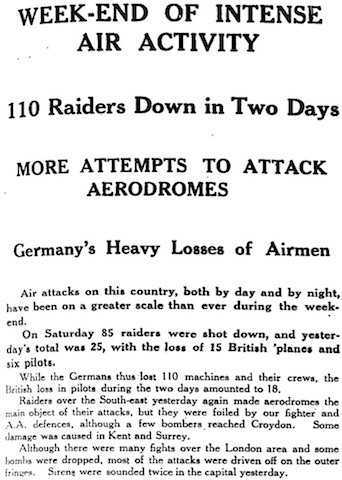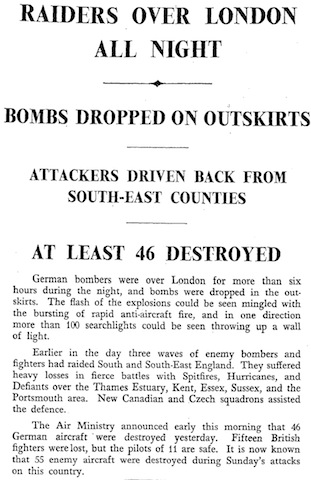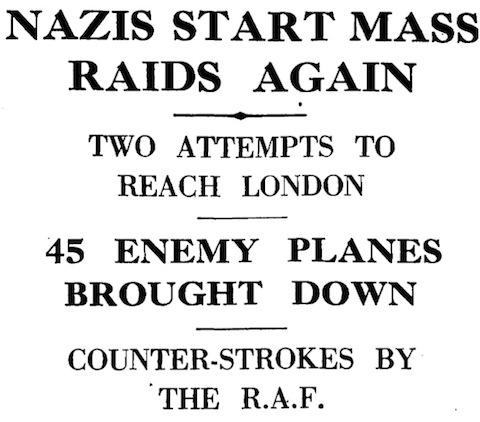Monday, 2 September 1940
The Manchester Guardian sums up the weekend’s raids above (5). Eighty-five enemy aircraft were shot down on Saturday, and another twenty-five yesterday. British losses on those days were thirty-seven and fifteen, respectively. The headlines make for reassuring reading: ‘Raiders baffled in attacks on aerodromes’, ‘Raiders scattered on way to London’, ‘Nazis lose 700 airmen in […]






